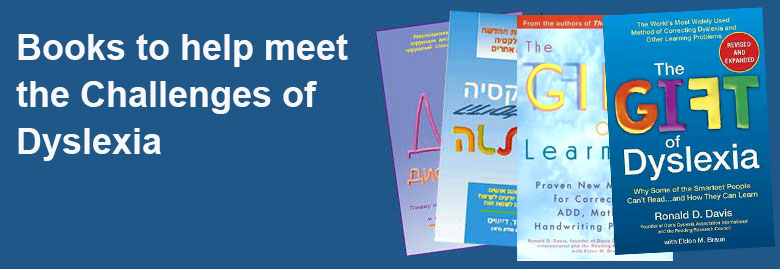Originally published in The Dyslexic Reader,
Issue 15 Copyright (c) Fall 1998-year DDAI.
On Point: Transferring Davis to the Classroom
By Abigail Marshall, Editor
Can Davis methods be transferred to a classroom setting? After almost eighteen years of providing services to dyslexic children and adults, Ron Davis’ Reading Research Council boasts a 97% success rate. But that success rate reflects an advantage that classroom teachers do not have: Facilitators in a private clinical setting work one-to-one with students who want to be there.
As we transfer Davis into public school settings, we are faced with questions and challenges:
• How can this one-on-one counseling method be applied to group settings?
• How do we provide students from troubled homes and communities with the motivation needed to make Davis methods meaningful?
• How can Davis be formulated to fit within the constraints faced by school teachers who must tailor their teaching to the external curriculum requirements of their state, their school district, their school administration?
Ideally, of course, we would want to give school teachers the tools to provide the same program as private Facilitators, in an environment where they could work individually with a different student each week. As a practical matter, however, most schools do not afford this flexibility to their resource or classroom teacher.
To meet this challenge, the tools that are part of Davis are expanding. ‘Alignment’, explained at page 5 is one such tool.
A hallmark element of the Davis program, as explained in The Gift of Dyslexia, is Davis Orientation Counselling. Bur Orientation can only be done in a one-on-one context, with give-and-take between student and provider. Although most dyslexic children find this easy (‘ a piece of cake’), adults who are not dyslexic are sometimes baffled. Also, Orientation is generally done only with children over age seven, whereas school teachers must address the needs of younger children in kindergarten and first grade.
Orientation remains the preferred mode for Davis providers. However, we have learned that the Alignment process is a workable and effective substitute for younger children, adults who do not visualize easily, and in group settings. With this issue, we present this tool for the use of classroom teachers everywhere.
Another issue we are now addressing is that of motivation and personal responsibility. Our new advanced training workshop is designed to give Davis providers tools to instill within their students and their parents the willingness and ability to follow through with Davis Symbol Mastery. We hope to also address some of these concepts in future issues of The Dyslexic Reader.
The work of teachers like Claudia Bennett (article on page 3) proves that Davis methods can succeed in the classroom. One advantage of the Davis program is that most of its ‘curriculum’ is self-created by the students, through their work with clay. Thus it is possible for a teacher to implement this approach with materials on hand in the classroom.
It is also important to recognize that Davis represents a unique approach, which addresses specific cognitive needs of children with the ability to think with words. Davis is not intended to supplant or replace another aspects of the curriculum, such as the school’s chosen reading texts. Rather, Davis fills the gap.






